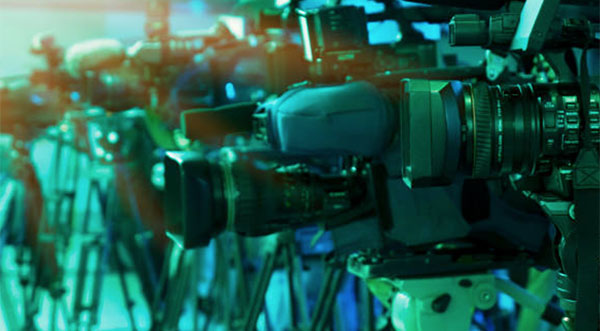The Role of Lens Assemblies in Enhancing Night Vision Capabilities
By Space Coast Daily // December 25, 2023

Night vision technology has revolutionized the way we see and navigate in low-light conditions. But have you ever stopped to think about the crucial role that lens assemblies play in this technology?
If you want to improve your night vision, then understanding the importance of lens assemblies is vital. Steele Industries, an industry leader in revolutionizing the lead time associated with night vision devices, has been instrumental in enhancing the performance and efficiency of these assemblies, ensuring superior night vision capabilities.
What Is Night Vision?
Night vision is the enhanced ability to see in low-light conditions, especially during nighttime or in dark environments. This is achieved through the use of image intensifiers or thermal imaging technology to amplify available light. Night vision devices, such as goggles or scopes, allow users to detect objects that are not visible to the naked eye.
To improve your night vision, it is recommended to use red light instead of white light, as it helps maintain the sensitivity of the eyes to low light. It is also important to regularly maintain your night vision equipment to ensure optimal performance.
What Are the Different Types of Night Vision Devices?
When it comes to enhancing our ability to see in low light or complete darkness, night vision devices play a crucial role. However, not all night vision devices are created equal.
1. Image Intensifiers
- Photons are directed into the objective lens.
- Electrons undergo amplification in the image intensifier tube.
- Electrons produce visible light, enhancing the image.
- The intensified image is then viewed through the eyepiece lens.
The first image intensifiers were developed in the 1940s for military purposes, allowing for nocturnal operations during World War II.
2. Thermal Imaging Devices
- Thermal imaging devices use thermography to detect infrared radiation and create a heat map.
- They can capture and display even the smallest temperature variations.
- These devices are frequently utilized in military, law enforcement, and surveillance operations.
Did you know? Thermal imaging devices are sensitive enough to detect temperature differences as subtle as 0.01 degrees Celsius.
3. Digital Night Vision Devices
- High-resolution sensors: Digital night vision devices use advanced sensors to capture and convert light into electronic signals.
- Image processing: The captured electronic signals are carefully processed and enhanced to produce clear and detailed images.
- Display technology: These devices utilize state-of-the-art display technology to present enhanced images to the user.
- Multifunctional capabilities: Some digital night vision devices offer additional features such as image and video recording for documentation purposes.
When selecting a digital night vision device, it is important to consider the specific application and environmental conditions to ensure optimal performance.
What Are the Components of a Night Vision Device?
When it comes to night vision devices, the lens assembly plays a crucial role in enhancing their capabilities.
1. Objective Lens
The objective lens is an essential part of a night vision device as it is responsible for collecting and transmitting light. When selecting an objective lens, there are several key elements to consider:
- Aperture size: A larger aperture allows more light to pass through, resulting in a brighter image.
- Lens quality: Opting for high-quality glass can reduce distortion and improve clarity.
- Focal length: Longer focal lengths typically offer better magnification capabilities.
- Coating: Choosing an objective lens with anti-reflective coatings can minimize glare and maximize light transmission.
- Compatibility: It is crucial to ensure that the objective lens is compatible with the specific night vision device model.
2. Image Intensifier Tube
The image intensifier tube is an essential element found in night vision devices, responsible for amplifying low light to generate a visible image. It is comprised of a photocathode, microchannel plate, and a phosphor screen, all working together to enhance the available light. High-quality image intensifier tubes, such as those utilized in military-grade night vision goggles, provide exceptional light amplification and resolution, guaranteeing clear and detailed imagery even in low-light situations.
3. Eyepiece Lens
- Focusing: The eyepiece lens plays a crucial role in adjusting the focus for a clear image.
- Eyestrain Reduction: It also aids in minimizing eyestrain during prolonged use, improving user comfort.
- Magnification: The eyepiece lens may also contribute to the overall magnification of the image, depending on the device.
4. Power Source
The power source is a crucial element in night vision devices, as it is responsible for maintaining uninterrupted functionality. Popular power sources include rechargeable batteries, such as lithium-ion or AA batteries, which provide long-lasting power. Some advanced devices even feature solar panels for extended outdoor use, while others utilize power-saving features to extend battery life. The choice of power source depends on the device’s energy consumption, intended use, and the availability of alternative power options.
How Do Lens Assemblies Enhance Night Vision Capabilities?
When it comes to night vision, the quality of the lens assembly plays a crucial role in determining the overall capabilities of the device.
1. Increasing Light Transmission
Steps to increase light transmission in night vision devices:
- Utilize high-quality lens materials with exceptional light transmittance properties.
- Apply anti-reflective coatings to minimize light loss caused by reflection.
- Opt for larger objective lenses to gather a greater amount of light for transmission.
In the 1920s, Hungarian physicist Kálmán Tihanyi developed the first infrared-sensitive electronic television camera for anti-aircraft defense, a groundbreaking advancement in night vision technology.
2. Reducing Glare and Reflection
- Utilize anti-reflective lens coatings to minimize light reflection and glare.
- Consider lenses with specialized designs, such as aspherical lenses or gradient index lenses, to reduce glare.
- Position the lenses within the device strategically to minimize direct light entry and reduce internal reflections.
When selecting lens assemblies for your night vision device, it is important to consider the environmental conditions in which it will be used. Opt for lens coatings that effectively reduce glare and reflection, ensuring optimal performance in various lighting situations.
3. Improving Image Clarity and Sharpness
- Ensure the image is sharp and clear by adjusting the diopter setting on the eyepiece.
- Use a lens with advanced optical design to minimize distortion and aberrations.
- Keep the lens clean and free from dust or smudges to maintain optimal clarity.
Regularly clean and inspect lens coatings to ensure maximum light transmission and image sharpness.
4. Enhancing Magnification and Field of View
- To enhance the effectiveness of night vision devices, it is important to use high-quality lens assemblies with appropriate magnification capabilities and field of view.
- Adjustable magnification options in lens assemblies allow for better focus on distant objects and details, resulting in improved overall visibility.
- Opting for wide-field lens assemblies can widen the area visible through the device, providing better situational awareness and allowing for better monitoring of surroundings.
- Ensuring compatibility between the lens assemblies and the night vision device is crucial for seamless integration and optimal performance.
What Are the Factors to Consider When Choosing Lens Assemblies for Night Vision Devices?
When it comes to night vision devices, the quality and effectiveness of the lens assembly can greatly impact their performance. But with so many options available, how do you choose the right lens assembly for your specific needs?
1. Type of Night Vision Device
- Image Intensifiers
- Thermal Imaging Devices
- Digital Night Vision Devices
2. Quality of Lens Materials
- Research lens material options such as glass, plastic, or specialized materials.
- Consider factors like refractive index, dispersion, and Abbe value for optimal performance.
- Evaluate durability and resistance to environmental factors like moisture and temperature.
- Assess the weight and impact of the lens material on overall device portability and comfort.
- Verify compatibility with other components for seamless integration and functionality.
The quality of lens materials significantly affects the performance and durability of night vision devices.
3. Coating and Anti-reflective Properties
Coating and anti-reflective properties play a crucial role in enhancing night vision capabilities. These features effectively minimize light loss and glare, resulting in a clearer and sharper image. High-quality lens coatings, such as multicoating or fully multi-coating, significantly improve light transmission, reduce reflections, and enhance contrast. Additionally, the anti-reflective properties not only improve performance but also aid in stealth by reducing the chances of light reflecting off the lenses.
4. Size and Weight
- When considering a night vision device, be sure to take into account the size and weight to ensure it is manageable for your intended use.
- If you plan on carrying or mounting the device, size should also be a factor to consider.
- For longer activities, a lighter and more compact device may be preferable.
- Look for ergonomic designs that balance size and weight while still maintaining high performance.
During a camping trip in the wilderness, the compact and lightweight design of my night vision monocular made it easy to navigate through the darkness, enhancing the overall outdoor experience.
5. Compatibility and Interchangeability
- Check the compatibility of lens assemblies with your specific night vision device model.
- Ensure interchangeability among different lenses to adapt to varying light conditions or magnification needs.
- Verify if the lens assemblies are easily replaceable or upgradable for future enhancements.
Regularly clean and maintain lens assemblies to optimize night vision device performance.












